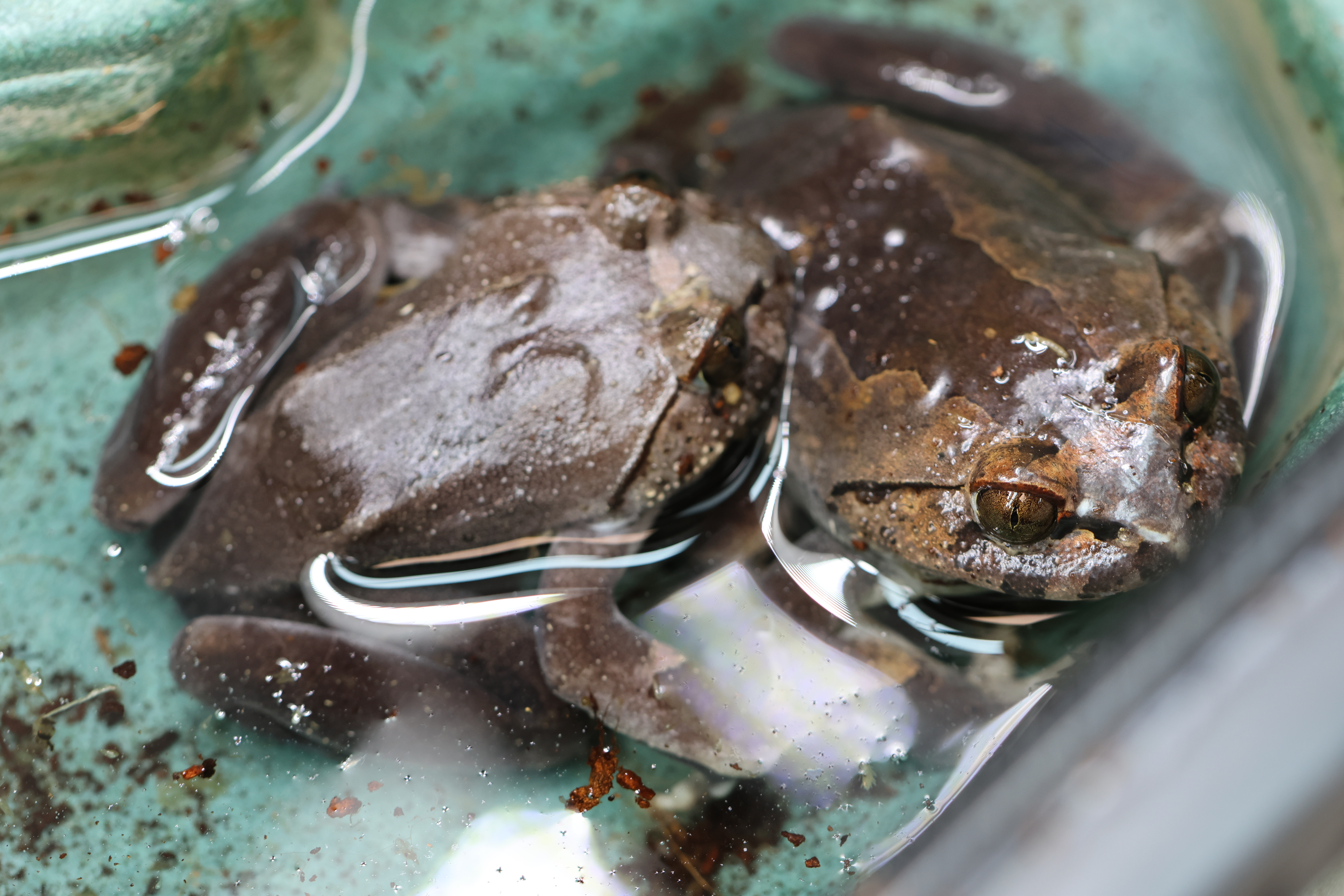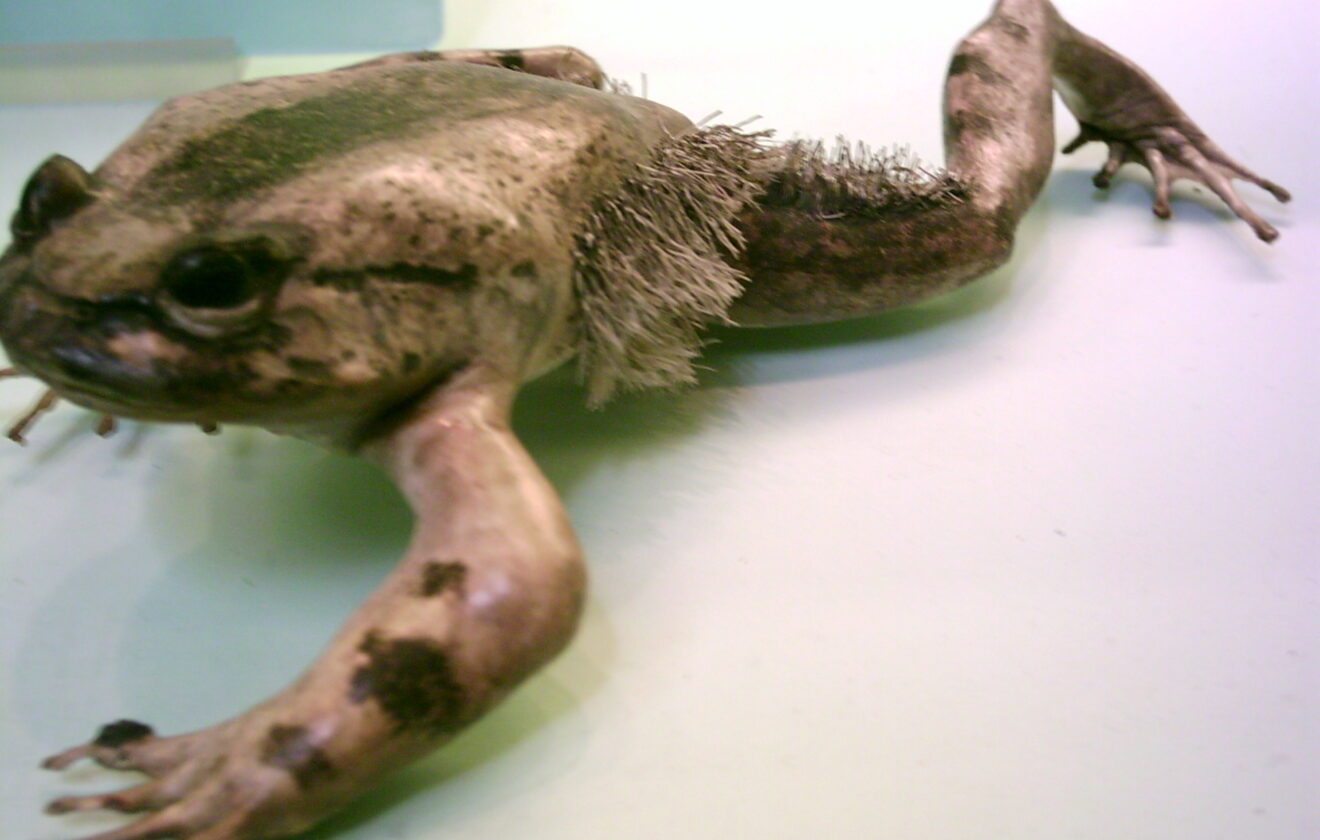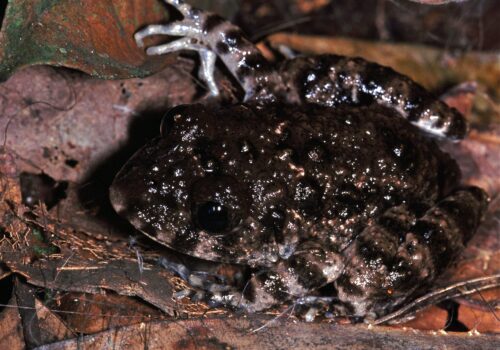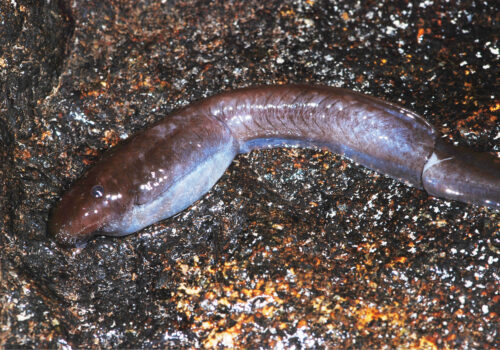- The Hairy Frog Unveiled: The Astonishing Life and Secrets of <em>Trichobatrachus robustus</em>
- Taxonomy and Classification: The Hairy Frog's Place in Amphibian Diversity
- Natural Habitat: An Amphibian at Home in the Rainforest's Heart
- Physical Characteristics: Mysterious Hair and a Hidden Weaponry
- Behavior and Life Cycle: Tales of Parental Devotion and Steadfast Survival
- Ecological Importance: Indicator of Ecosystem Health and Stability
- Threats, Conservation, and Future Survival: Protecting an African Amphibian Treasure
- Cultural and Scientific Significance: From Folk Traditions to Biomedical Potential
- Conclusion: Guarding Ecological Wonders for Future Generations
The Hairy Frog Unveiled: The Astonishing Life and Secrets of Trichobatrachus robustus#
Hidden deep within the lush rainforests of Central Africa, where sunlight filters gently through the canopy to dapple the forest floor, resides an amphibian so bizarrely captivating that it sparks curiosity and fascination among scientists, nature lovers, and conservationists alike. Meet the Hairy Frog, scientifically known as Trichobatrachus robustus, a creature whose very existence seems to defy ordinary expectations of amphibian life.
This enigmatic amphibian—also affectionately termed the “horror frog” by some—is infamous for its peculiar, hair-like skin projections and extraordinary bone-breaking defense mechanisms. However, beyond the sensational surface of intrigue lies a fascinating evolutionary tale rich with ecological and scientific insights. The narrative of the Hairy Frog is both captivating and critical, offering windows into broader ecological connections and the urgent conservation concerns faced by fragile rainforest habitats today.
Taxonomy and Classification: The Hairy Frog’s Place in Amphibian Diversity#
Trichobatrachus robustus, first described by George Albert Boulenger in 1900, belongs to the family Arthroleptidae, an ancient lineage of frogs widespread across sub-Saharan Africa. Within its family, this unique amphibian finds itself in its own monotypic genus, Trichobatrachus, marking its distinctiveness among thousands of other amphibian species worldwide.
The genus name Trichobatrachus comes from the Greek words “tricho” meaning hair and “batrachus” meaning frog—a direct reflection of the amphibian’s most puzzling and visually arresting characteristic. Despite its superficial appearance, the Hairy Frog shares evolutionary kinship with other so-called ‘squeaker’ frogs in Arthroleptidae known for their vocal calls.
Natural Habitat: An Amphibian at Home in the Rainforest’s Heart#
The Hairy Frog inhabits a verdant swath of dense tropical rainforest within Central Africa, primarily in Cameroon, Equatorial Guinea, the Democratic Republic of the Congo, Nigeria, and Gabon. Here, amidst the ample humidity and rain-soaked terrains of its habitat, the frog thrives, leading a secretive existence beside clear-moving forest streams and rivers.
The rainforest ecosystem provides an ideal sanctuary for such an amphibian, with its countless nooks beneath leaf litter, moss-carpeted logs, and rocky outcroppings near freshwater habitat. The Hairy Frog favors pristine, undisturbed microhabitats, avoiding heavily degraded or polluted water bodies, reinforcing its role as a sensitive ecological indicator. Its mere presence signals ecosystem health—a living testimony to the rainforest’s intact biodiversity.
Physical Characteristics: Mysterious Hair and a Hidden Weaponry#
An Amphibious Oddity: The Unique “Hairs”#
Perhaps most remarkable about Trichobatrachus robustus—and unsurprising given its name—are the fringes of filamentous skin structures. During breeding season, adult males prominently display these peculiar hair-like dermal extensions on their flanks and thighs, imparting an appearance unparalleled amongst amphibians. Contrary to genuine hair fibers found in mammals, these structures comprise highly vascularized dermal papillae that increase surface area and, intriguingly, are theorized to facilitate oxygen absorption during extended underwater stays.
The hairy appendages represent a fascinating physiological adaptation: enabling male frogs to remain submerged longer while vigilantly guarding their eggs underwater—a compelling example of parental care unique among amphibians.
An Ingenious Defense: Bone-breaking Claws#
Beyond its furry guise, Trichobatrachus robustus harbors another sophisticated evolutionary adaptation: a defensive strategy that borders on the extraordinary. Facing predation, the frog deploys retractable, bone-based claws by intentionally breaking toe bones through specialized grooves in the skin. These sharp bone protrusions serve as defensive weapons against would-be predators—an astonishing and macabre feat practically unseen elsewhere in nature.
This dramatic adaptation demonstrates nature’s uncanny ingenuity in the face of survival pressures, further emphasizing how specialized a species must become to persist within competitive tropical regions.
Behavior and Life Cycle: Tales of Parental Devotion and Steadfast Survival#
Aquatic Guardians: Breeding Behaviors and Parental Investment#
Hairy Frogs exhibit remarkable paternal care, reflecting unique behavioral adaptations developed to maximize offspring survival in dynamic rainforest environments. Once females lay their eggs along streambeds, males carefully guard them, vigilantly watching over and protecting them until they hatch into tadpoles. Throughout prolonged watch periods, males partially submerge themselves, relying on their hair-like projections to enhance oxygen absorption underwater—an extraordinary act of parental dedication rarely observed among amphibians.
A Life of Amphibian Vigilance: Predation and Survival Tactics#
Outside the breeding season, Hairy Frogs maintain secretive, nocturnal habits to avoid predators and competitors. They prey primarily on aquatic insects, crustaceans, and occasionally smaller vertebrates. Quietly ambushing prey from submerged refuges or from shadowy recesses along moist stream banks, their cryptic coloration and nocturnal habits help secure stealthy, skilful hunts that avoid detection. Predation threats include various birds, snakes, and small mammalian carnivores, but the frog’s startling self-defense strategy affords effective deterrence.
Ecological Importance: Indicator of Ecosystem Health and Stability#
All amphibians play vital ecological roles, and Trichobatrachus robustus is no exception. Serving simultaneously as predator and prey, this species represents a crucial vector in rainforest food webs, sustaining intricate ecological balances. Its sensitivity to habitat disturbance makes the Hairy Frog an ideal bioindicator—its population health mirrors environmental integrity, signaling habitat disruptions such as deforestation, pollution, or climatic stresses.
Threats, Conservation, and Future Survival: Protecting an African Amphibian Treasure#
Habitat Loss and Human Pressures#
The rich, tropical forests sheltering the Hairy Frog face immense anthropogenic pressures. Rampant deforestation, often stemming from timber extraction, agriculture expansion, infrastructure development, and urbanization, dramatically fragments and reduces available pristine habitats, imperiling the species’ long-term survival. Additionally, pesticide runoffs and pollution contamination increasingly compromise sensitive freshwater ecosystems essential to the frog’s lifecycle.
Current Conservation Status#
Though currently listed as Least Concern by the International Union for Conservation of Nature (IUCN), ongoing threats may soon reshuffle conservation priorities. Accurate data and long-term studies remain scarce, emphasizing an urgent necessity for increased research and monitoring initiatives ensuring proactive conservation strategies.
Cultural and Scientific Significance: From Folk Traditions to Biomedical Potential#
In various Central African cultures, local folklore endows the Hairy Frog with mystical narratives, reflecting its profoundly unusual features and habitat preferences. Beyond cultural folklore, scientists closely study Trichobatrachus robustus for biological innovation insights. The remarkable physiology enhancing oxygen capture and extraordinary regenerative capabilities observed in broken bone defenses intrigue biomedical researchers, potentially inspiring future medical advancements.
As a rare amphibian marvel with untapped biological insight potential, the Hairy Frog continues to captivate both scientists and casual observers, highlighting the indispensable value of protecting even the little-known species hidden in the world’s biodiversity-rich corners.
Conclusion: Guarding Ecological Wonders for Future Generations#
The story of the Hairy Frog—of breathtaking adaptations, dedicated paternal care, and exceptional ecological roles—exemplifies nature’s boundless ingenuity. Celebrating Trichobatrachus robustus necessitates acknowledging the broader ecological web it inhabits, underscoring our global responsibility towards rainforest preservation efforts.
Ultimately, the Hairy Frog symbolizes a rallying point for conservation—a charismatic amphibian encouraging us all to embrace stewardship and nurture in the preservation of the wondrous biodiversity on our shared planet. Let each encounter with this enigmatic amphibian inspire further inquiry, understanding, and action to safeguard its future.
















